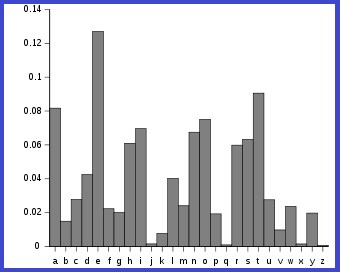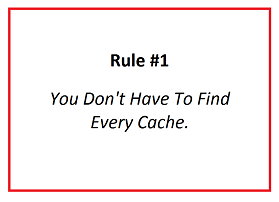This is a revised verson of How Do I Solve These #@&% Puzzles?!! Subst Ciphers, which I had to archive because the area became inaccessible.
Let's talk about substitution ciphers. With a substitution cipher, each letter is represented by a letter, number, symbol, or even multiple letters, which stay the same through the cipher.
You've already been exposed to one of these. In the 5th cache of this series, the numbers from 1 through 26 were substituted for the letters of the alphabet.
One simple, widely known, and very old type of substitution cipher is the Caesar shift (also known as the shift cipher, Caesar's code, or Caesar's cipher), named after Julius Caesar, who used it to encrypt communications.
With a Caesar shift, each letter in the message is replaced by a letter a fixed number of spaces away in the alphabet.

If I were using a Caesar shift of 3 positions to encrypt coordinates, NORTH FORTY FIVE DEGREES would look like QRUWK IRUWB ILYH GHJUHHV.
An example of the Caesar shift you've already seen is the Geocaching cache page Decryption Key. It's a Caesar shift where each letter is shifted 13 places. This is a common substitution cipher also known as ROT13 (or ROT-13), which means "rotate by 13 places".

ROT5 is rotated 5 spaces; ROT20 is rotated 20 spaces; you get the idea.
Some substitution ciphers go a step further in complexity by replacing letters in a message with letters from the alphabet in random order. (Like in comic page cryptograms and cryptoons.)
Here's an example:

This is how I solve these:
First I write out the alphabet so I can track the letters I've deciphered:

Then I use colored highlighters and pens to mark up the message for interesting letter combinations or letter combinations that repeat.
Then I look for patterns. With a geocaching puzzle, I expect to find particular words pertaining to coordinates, so I look for common geocaching-related words. The ones below are especially helpful to me, so I usually start looking for these:
I look for these words and their patterns:
| Words |
Patterns |
| I, A |
The only single letter words in English |
| FOUR FIVE |
Two four-letter words next to each other, starting with the same letter |
| FORTY FIVE |
5-letter and 4-letter words next to each other, starting with same letter |
| ONE TWO TWO |
3 3-letter words in a row; last 2 are the same |
| ONE TWENTY TWO |
3, 6, and 3-letter words in a row; 2nd and 3rd starting with same two letters |
| THREE |
5 letters ending with 2 identical letters |
| SEVEN |
5 letters with the same letter in the 2nd and 4th position |
| NINE |
4 letters with the same letter in the 1st and 3rd position |
| DEGREES |
7 letters with the same letter in the 2nd, 5th, and 6th positions |
| CACHE |
5 letters with the same letter in the 1st and 3rd position |
| COORDINATES |
11 letters with the same letter in the 2nd and 3rd position |
| LATITUDE, LONGITUDE |
8 and 9 letters, starting with same letter and ending with same 5 letters |
| THE, AND |
Common 3-letter words that may be repeated |
| OF, TO, IN, IT, IS ... |
Common 2-letter words (these and others) |
It also helps me to write out a list of other words I might find in a geocaching message so that I can recognize them as I begin to decipher their letters. If you've figured out which letter is E, this becomes much easier. Some examples are:
NORTH
WEST
HUNDRED (the ...DRED pattern helps identify this one)
POINT
PERIOD
DOT
All the numbers from ZERO through TWELVE
All the numbers from THIRTEEN through NINETEEN (the ...teen patterns helps identify these.)
The numbers by tens from TWENTY, THIRTY, ... to NINETY
MINUTES
SECONDS (... which might indicate that the coordinates are in another format)
Messages with a lot of words may at first seem more intimidating, but I find they're actually easier than short messages - you have more info from which to identify patterns.
Using the example message from above, we can practice some of these techniques. You can print a copy ("1. Example message" from the the Gallery) and follow along.
Don't be hesitant to make guesses. Just do your work in pencil, with a good eraser handy. While looking for patterns from the chart and list of words from above, I've started marking up the example:


Answer (in ROT13, which is the same as the Geocache page Decryption Key) is: Gur cbfgrq pbbeqvangrf sbe guvf pnpur.
Below is the puzzle you must solve to get the coordinates for this cache.
Remember: The posted coordinates for this cache are N 45° 37.536 W 122° 52.971, so the solution should be within 1 or 2 minutes. Look for patterns for words to spell out these numbers:


Park due east of the cache. Access parking from the street north of parking. Parking info is in the checker, or from your solution subtract 0.045 from west.

If this isn't enough to help me crack the code, then I try Frequency Analysis of the letters.
Frequency analysis is based on the fact that certain letters and combinations of letters occur with varying frequencies. For example, in the English language, E, T, A and O are the most common, while Z, Q and X are rare. The nonsense phrase "ETAOIN SHRDLU" represents the 12 most frequent letters in typical English language text.

Simon Singh's "The Black Chamber" website has some good tips for cracking a substitution cipher using letter frequency analysis: Tips for cracking a substitution cipher
A final note: A Caesar cipher is often incorporated as part of more complex schemes, such as Transposition ciphers or a Vigenère cipher. These are tougher than what I intend to cover in this series. If you're interested in learning about them, try an internet search for "Transposition cipher" or "vigenere cipher".
As I said, this is one of a series of "How Do I Solve..." caches. They are spread out in different neighborhoods. It might help to solve them in order, but you don't need to. I tried to make these easy to understand, but if you have any questions about them, please ask.
Here are all the caches in the series. They are also posted in a "How Do I Solve These #@&%$ Puzzle Caches?!!" bookmark list.
This series of #@&%$ Puzzles contains the following caches:
Note for Remote Solvers: You have a chance to earn a “I Solved Those #@&% Puzzles” virtual badge to display proudly on your profile page. After you’ve solved the first 15 puzzles in the series, send me your solutions and I’ll send you the info for the badge.
Local solvers earn a “I Solved and Found Those #@&% Puzzles” Badge after finding the Bonus Graduation cache.
Have fun solving puzzle caches! And remember ...

